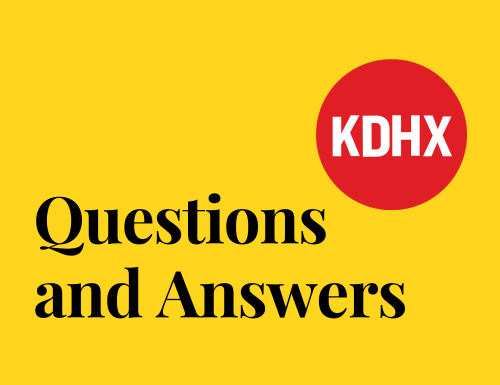
Symphony Preview: Auf der Sonnenseite der Straße
By Chuck Lavazzi
“Grab your coat and get your hat / Leave your worry on the doorstep / Just direct your feet / To the sunny side of the street” – Dorothy Fields, “The Sunny Side of the Street,” 1930.
[Preview the music with the SLSO's Spotify playlist.]
Sunshine is good for us. It’s a source of vitamin D, a deficiency of which can cause a raft of health issues. Inadequate sunshine can exacerbate sleep disorders and contribute to Seasonal Affective Disorder, which is a fancy way of saying weeks on end of gloom tends to make one gloomy.
.jpg) |
| Hannah Eisendle Photo courtesy of the SLSO |
But, like any other good thing, too much of it is no good at all. Too much vitamin D can lead to a nasty assortment of illnesses. Too much exposure to the sun can increase your chance of skin cancer. And the combination of excessive sun and heat can lead to heat exhaustion, dehydration, irritability, and sunstroke—the medical term for which is heliosis.
Which, by no coincidence at all, is the title of the first work Cristian Măcelaru will conduct on the St. Louis Symphony Orchestra program this weekend (October 13 and 15) at the Touhill Center.
Commissioned by the Vienna Radio Symphony Orchestra and first performed by that ensemble under the baton of chief conductor Marin Alsop last March, “heliosis” [sic] is the work of Austrian composer/conductor/pianist Hannah Eisendle (b. 1993). This is not the cheery evocation of summer in Fields’s lyrics but rather, as Eisendle (quoted in this week’s program notes) says, the kind of summer that is “dirty, suffocating, sticky with dust.” Not “The Sunny Side of the Street” so much as the Lovin’ Spoonful’s “Summer in the City”: “All around, people looking half-dead / Walking on the sidewalk, hotter than a match head.”
“Eisendle’s threatening brass and multiplicity of percussion effects,” wrote David Karlin of the August 2002 performance at the BBC Proms, “took us on a short, vivid journey across the terrors of a desert landscape, weirdly glissando strings perhaps giving a clue to our disorientation.”
Having listened to the BBC Proms performance on YouTube, I can only agree. It’s a tour de force of orchestration and, at a little over six minutes, it’s just the right length. Because of what I wrote above about “too much of a good thing.”
 |
| Mozart by Johann Nepomuk della Croce Public Domain |
Next, things cool down a bit with the Violin Concerto No. 5 in A major, K.219, by Mozart (1756–1791), first performed in 1775 with the composer as the soloist (a role filled this weekend by Benjamin Beilman). The last of the composer's violin concertos, the Fifth is filled with unexpected turns of phrase, including the so-called "Turkish" interlude of the finale in which the cellos and basses strike their strings, col legno, to produce an exotic percussive effect. The result is a work "very nearly in line with the instrumental concerto of the next century,” as Blair Johnson points out at Allmusic.com. “Though the piece itself is clearly within the Classical chamber concerto tradition, its scale (better than 25 minutes, usually) and the degree of its technical demands mark the work as something new for the violin."
After intermission, it’s back to the Dorothy Fields brand of sunshine with the Symphony No. 2 in D major, Op. 73, by Brahms (1833–1985). Written and first performed in 1877, the Second concludes with one of the sunniest final movements you will ever hear. Indeed, as James Keays writes in program notes for the Redland Symphony, the Second "is one of the most cheerful of Brahms' mature works, so much so that it is often called his 'Pastoral,' an obvious reference to Beethoven's symphony of the same name."
The comparison is an apt one since Brahms, like Beethoven, loved nature and often drew inspiration from it. “Raised in a hard-scrabble part of Hamburg,” wrote Tim Munro in program notes for the SLSOs 2013 performance “he took long walking trips with his family. Later, escaping Vienna meant he could breathe and be alone with his thoughts."
The escape that led to the Second Symphony was to the Austrian town of Pörtschach am Wörthersee. Brahms loved the place and rhapsodized that "the melodies flow so freely that one must be careful not to trample on them." He rented two small rooms for himself at the village that summer, and if his correspondence is an indication, he couldn't have been happier, as Philip Huscher writes in notes for the Chicago Symphony:
"It is delightful here," Brahms wrote to Fritz Simrock, his publisher, soon after arriving, and the new symphony bears witness to his apparent delight. Later that summer, when Brahms's friend Theodore Billroth, an amateur musician, played through the score for the first time, he wrote to the composer at once: "It is all rippling streams, blue sky, sunshine, and cool green shadows. How beautiful it must be at Portschach."
 |
| Brahms c. 1872 Photographer unknown Public Domain |
Listening to the symphony once again, I was struck by the sense of serenity, openness, and good humor in the piece. I was also struck by the similarity between the second theme of the first movement and Brahms's famous "Lullaby" ("Wiegenlied" in German) from 1868. Whether that was intentional or not is hard to say but, as Dick Strawser of the Harrisburg Symphony points out in a 2010 blog post, Brahms does report that the rooms where he was staying in Pörtschach am Wörthersee were near the summer home of Bertha and Arthur Faber, the couple for whom he wrote the "Wiegenlied" in the first place. Personally, I like to think that it was a genial nod to his friends and to the joy he felt in composing this cheerful work.
The Essentials: Cristian Măcelaru conducts the St. Louis Symphony Orchestra, with violin soloist Benjamin Beilman, in Hannah Eisendle’s “heliosis”; Mozart’s Violin Concerto No. 5 in A major, K.219; and the Symphony No. 2 in D minor, Op. 73, by Brahms. Performances are Friday at 7:30 pm and Sunday at 3 pm, October 13 and 15, at the Touhill Center on the UMSL campus. The Friday performance will be broadcast on Saturday the 14th at 7:30 pm on St. Louis Public Radio and Classic 107.3.



